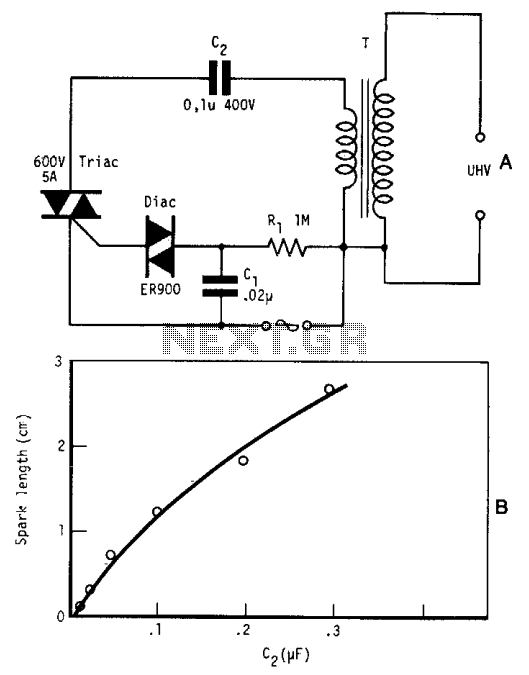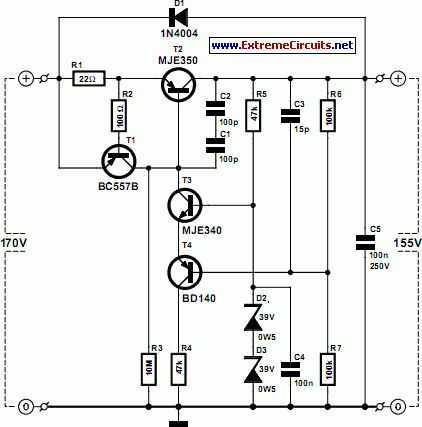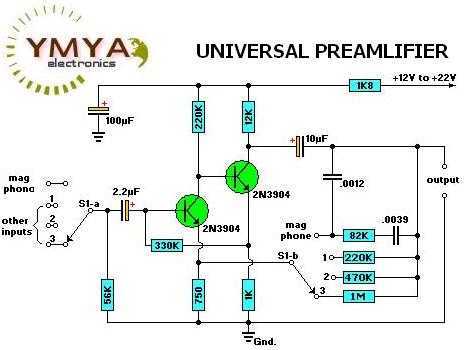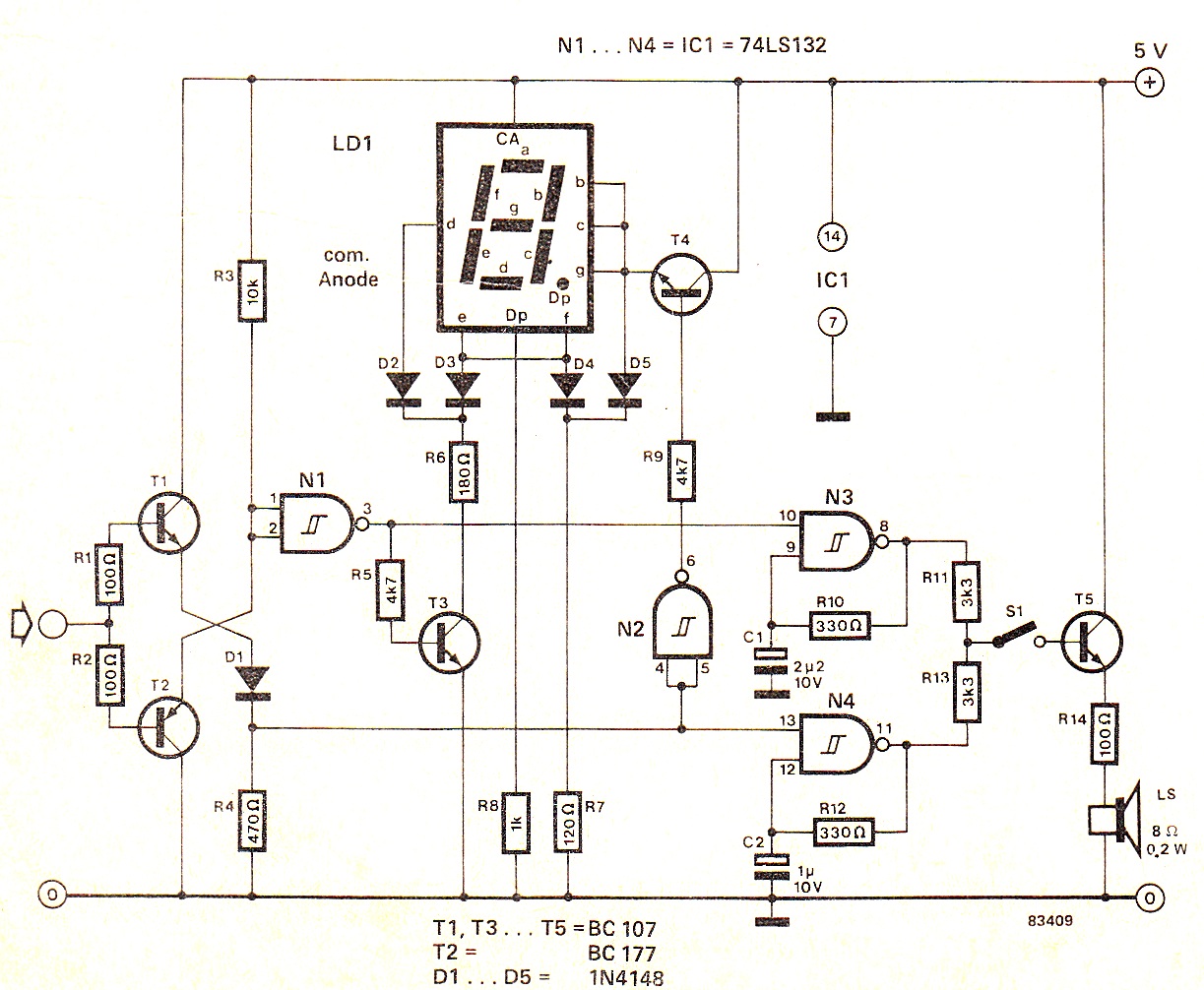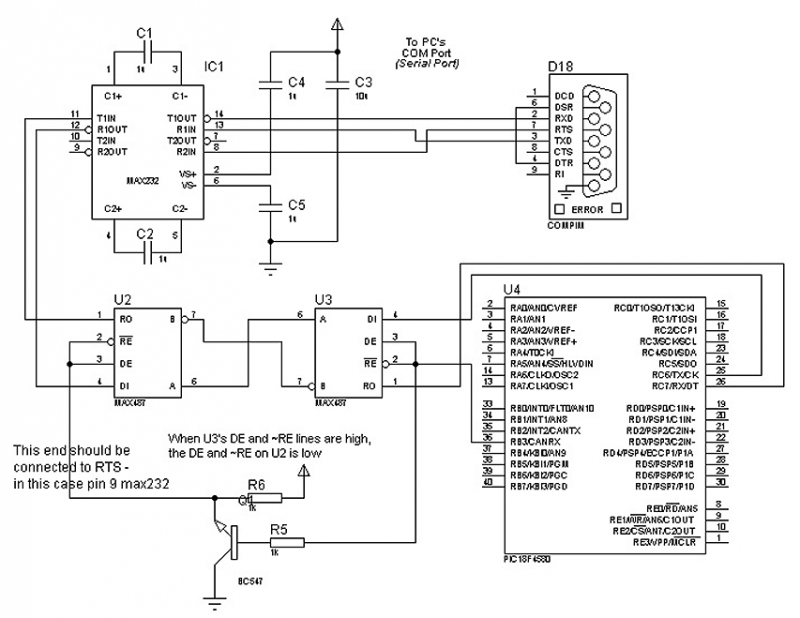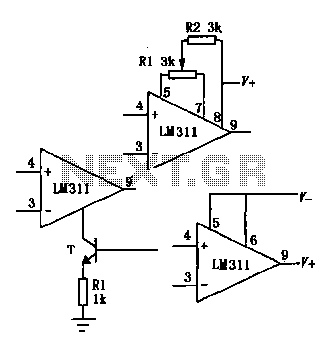
Low Voltage Preamplifier

The provided description pertains to a unique low voltage variant of an audio preamp. The emitter voltage of T1 is biased close to half the supply voltage, which is 1.5V. This biasing allows for the maximum output voltage swing. The circuit features two transistors, both of which are direct coupled and come with closed loop feedback to aid in temperature stability.
The second transistor, T2, realizes the full voltage gain of the amplifiers. For the operation to have low noise, the collector current of T2 is maintained at approximately 70uA. T1, the first transistor, merely buffers T2. It operates in emitter follower mode, which provides a good low output impedance. The overall signal-to-noise (S/N) ratio, which is measured at the output, has been indicated below, but no specific values are provided in the original description.
To further elaborate, the low voltage design of this audio preamp is advantageous in applications where power consumption needs to be minimized. The use of direct coupling between the transistors ensures a high level of frequency response, making the preamp suitable for a wide range of audio signals. The closed-loop feedback system helps to maintain the stability of the system, which is critical in maintaining the quality of the amplified signal, especially in variable temperature conditions.
The emitter follower mode of operation of T1 ensures that the output signal follows the input voltage, thus providing a high input impedance and low output impedance. This characteristic makes the circuit an excellent choice for impedance matching applications.
The low noise operation of the circuit is achieved by keeping the collector current of T2 at about 70uA. This reduces the chance of thermal noise, which can degrade the quality of the output signal. The overall S/N ratio would give an indication of the quality of the output, with a higher ratio indicating a cleaner, higher fidelity signal. However, without specific values, it is difficult to assess the exact performance of this preamp.This is a special low voltage version of my audio preamp. T1`s emitter voltage is biased close to half supply voltage (1.5V) to allow for maximum output voltage swing. Both transistors are direct coupled and have closed loop feedback to aid temperature stability. T2 realizes the amplifiers full voltage gain, and for low noise operation, T2 collector current is about 70uA.
T1 merely buffers T2 and operates in emitter follower mode providing a good low output impedance. The overall S/N ratio measured at the output is shown below: 🔗 External reference
The second transistor, T2, realizes the full voltage gain of the amplifiers. For the operation to have low noise, the collector current of T2 is maintained at approximately 70uA. T1, the first transistor, merely buffers T2. It operates in emitter follower mode, which provides a good low output impedance. The overall signal-to-noise (S/N) ratio, which is measured at the output, has been indicated below, but no specific values are provided in the original description.
To further elaborate, the low voltage design of this audio preamp is advantageous in applications where power consumption needs to be minimized. The use of direct coupling between the transistors ensures a high level of frequency response, making the preamp suitable for a wide range of audio signals. The closed-loop feedback system helps to maintain the stability of the system, which is critical in maintaining the quality of the amplified signal, especially in variable temperature conditions.
The emitter follower mode of operation of T1 ensures that the output signal follows the input voltage, thus providing a high input impedance and low output impedance. This characteristic makes the circuit an excellent choice for impedance matching applications.
The low noise operation of the circuit is achieved by keeping the collector current of T2 at about 70uA. This reduces the chance of thermal noise, which can degrade the quality of the output signal. The overall S/N ratio would give an indication of the quality of the output, with a higher ratio indicating a cleaner, higher fidelity signal. However, without specific values, it is difficult to assess the exact performance of this preamp.This is a special low voltage version of my audio preamp. T1`s emitter voltage is biased close to half supply voltage (1.5V) to allow for maximum output voltage swing. Both transistors are direct coupled and have closed loop feedback to aid temperature stability. T2 realizes the amplifiers full voltage gain, and for low noise operation, T2 collector current is about 70uA.
T1 merely buffers T2 and operates in emitter follower mode providing a good low output impedance. The overall S/N ratio measured at the output is shown below: 🔗 External reference
